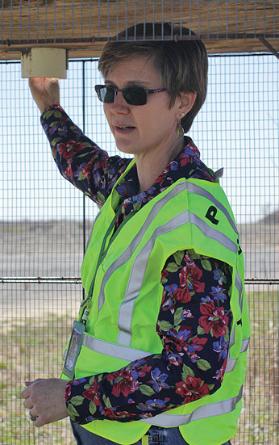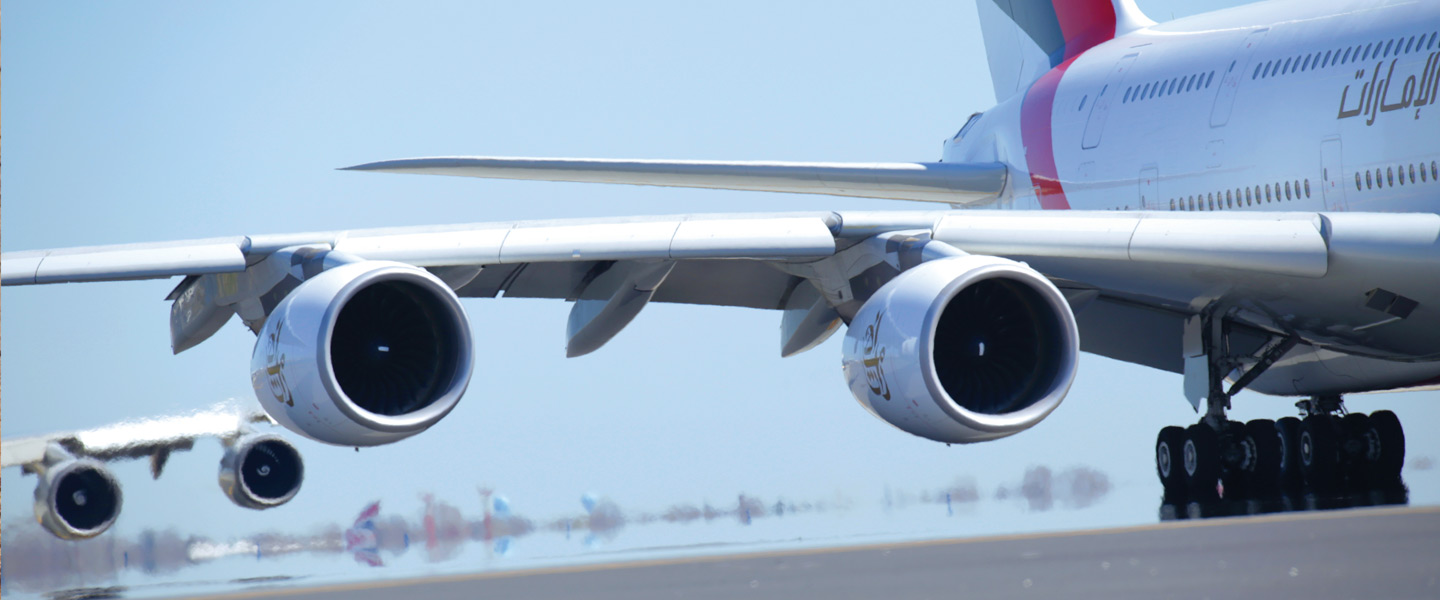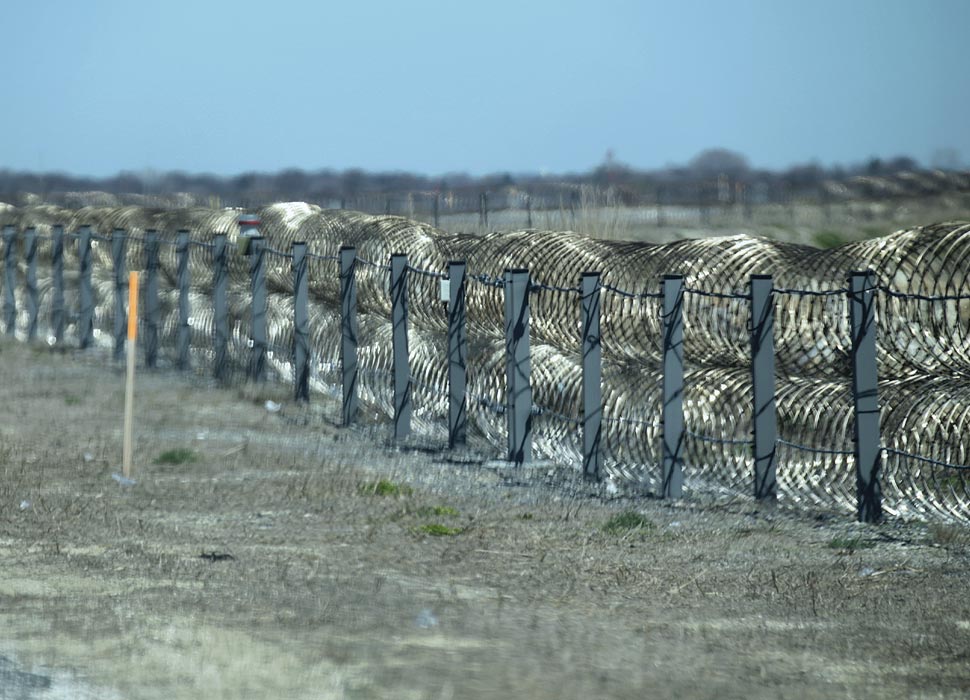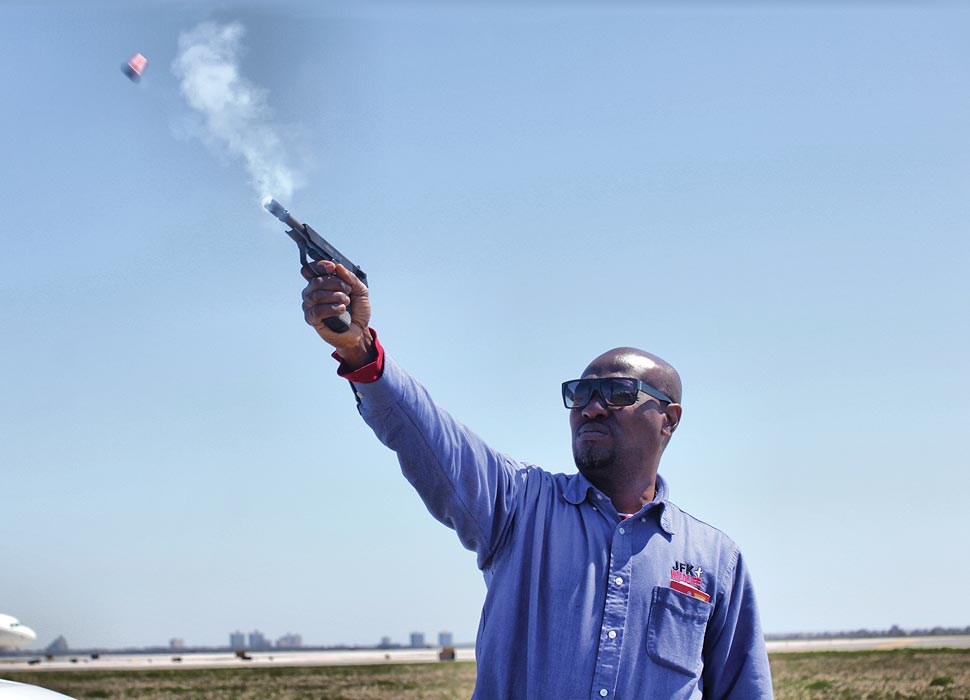Bird Strike
When airplanes collide with flocks of birds the results can be fatal. One wildlife biologist spends her days at JFK Airport attempting to keep the sky safe for takeoff and landing.
The sky is blue and cloudless, and the morning vibe is relatively calm, save for the steady set of jet engines screaming down the runways at John F. Kennedy International Airport. Laura Francoeur ’90 is on a routine drive across the tarmac, casually scanning the concrete for signs of dangerous animal debris.
As if on cue, a flock of starlings burst from a patch of grass, and luckily disperse away from the departing aircraft and across Jamaica Bay, which abuts the airfield.
An airfield may seem an unlikely place for wildlife control, but that is exactly what Francoeur does as chief wildlife biologist for the Port Authority of New York and New Jersey. Francoeur oversees wildlife management efforts at five of the agency’s airports, and is based at JFK.
“This airport is surrounded on three sides by water,” Francoeur explains. “So there is actually a lot of potential habitat for wildlife.”
On their daily rounds, Francoeur and her team are keeping aircraft safe by reducing bird strikes that can
cause damage, injuries or in rare cases, casualties. At the same time, the team seeks to respect wildlife’s balance
with its environment.
“Our goal is never to eliminate wildlife, just eliminate hazards on the runway,” Francoeur says.
Shell fragments
Francoeur is an expert on the habits of wildlife around the airfield. Dawn and dusk are usually the busy times of the day for bird activity, she says, adding that gulls and other migratory waterfowl are frequently in conflict with the passenger and cargo aircraft that make JFK among the busiest airports in the nation. As evidence, fragments
of clamshells litter much of the tarmac closest to the water’s edge.
“The gulls grab the clams at low tide, and they fly and they drop them on the hard surfaces and crack them open,” Francoeur says. “They’re very, very smart.”
Bird strikes are so prevalent, and the proper management of wildlife surrounding airfields so critical, that the Port Authority was authorized to create a biologist staff position in the 1990s. Francoeur took on the job at JFK in 1999.

“That was a mess,” Francoeur recalls about that day. Her tone turns more serious, explaining that the crash landing centralized the wildlife efforts through the port.
Aircraft bird strikes have likely been occurring since the first flight by the Wright brothers on a North Carolina beach in 1903. Carving their own paths in the skies, migratory birds take flight in search of food and shelter, while journeying to nesting sites. In the 1980s, an increase in laughing gull strikes was linked to a colony at Jamaica Bay Wildlife Refuge, the only known nesting colony in the state.
“By the time we hit the late ’80s, two-thirds of all the strikes at JFK were caused by laughing gulls,” Francoeur says. “We had over 300 strikes one year, and 270 of them were from laughing gulls. It was a huge percentage.”
A blue ribbon panel of international experts recommended a twofold approach to the gull problem at JFK. The long-term recommendation was to explore the removal of the colony from the Jamaica Bay Wildlife Refuge. Lethal removal became the short-term solution. It is why wildlife supervisors are trained in firearm handling and carry rifles with them on patrols of the airfield.
“That’s been [a] really effective [short-term solution] and has reduced the laughing gull strike by over 90 percent,” Francoeur says. “It’s also reduced the strike rate for the other three species of gull that are in this area by, generally, somewhere around 60 to 70 percent.”
But “we’re not removing all the gulls, just the ones that are trying to fly over the airport. A lot of them are deterred by the shooting.”


